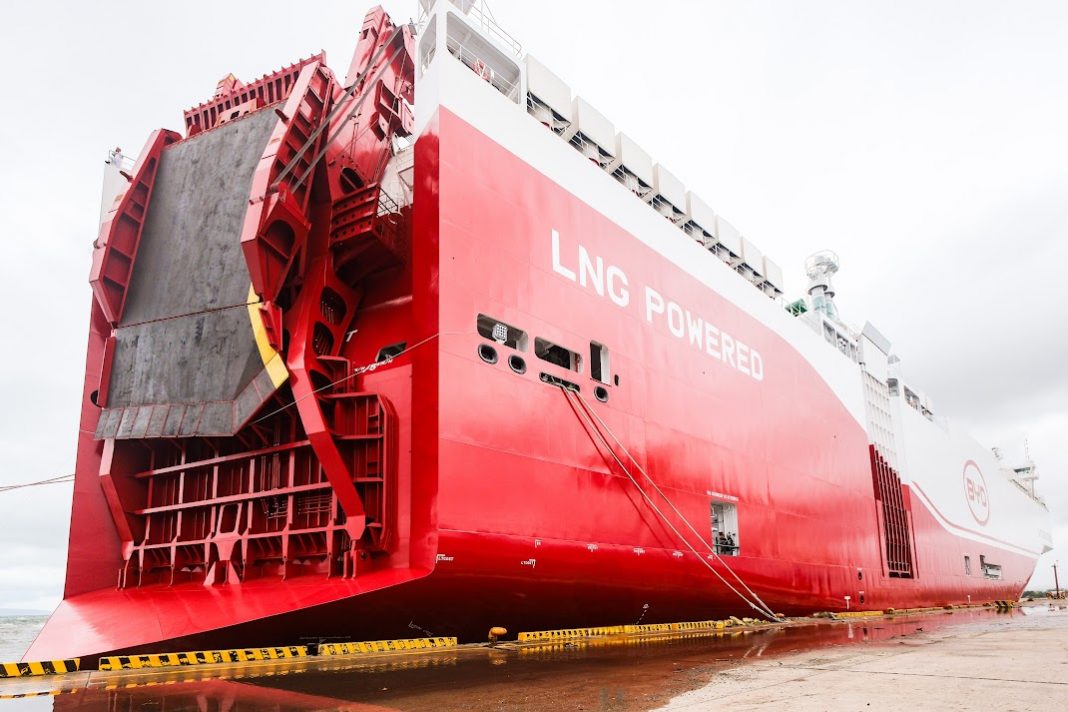BYD Zhengzhou maiden voyage docked in Batangas City, its first international port of call last July 25 marking a significant milestone in the electric car maker’s own vertically integrated logistics network.
The delivery of over 1,500 new energy vehicles (NEVs) to the Philippines is a tangible outcome of this advanced logistical solution, which aims to provide greater efficiency and control over a rapidly expanding global footprint.
One half of BYD Zhengshou’s crew are Filipinos.

Following its stop in the Philippines, the vessel continued its maiden voyage with scheduled calls in Jakarta, Indonesia; Singapore; Port Klang, Malaysia; and Thailand, demonstrating a coordinated regional distribution plan.
This distribution plan leverages on the deployment of a dedicated fleet of vessels which allows BYD to mitigate the challenges of relying on third-party logistics providers. This strategy ensures more frequent and predictable deliveries, which are crucial for maintaining a consistent supply of vehicles and spare parts in key international markets.
The strategic importance of this logistics hub is underscored by the vessel’s namesake–BYD’s Zhengzhou manufacturing hub–a massive, vertically integrated industrial city with an annual production capacity of over 1 million vehicles. By controlling its entire supply chain, from manufacturing and battery production at the Zhengzhou plant to a dedicated global shipping fleet.
The fleet includes two primary classes of ships with different specifications:
7,000-vehicle capacity class, including the BYD Explorer No. 1, BYD Changzhou, BYD Hefei, and BYD Zhengzhou, which are approximately 199.9 meters long and 38 meters wide. They are equipped with a dual-fuel propulsion system that primarily runs on liquefied natural gas (LNG), which significantly reduces carbon emissions by over 30% compared to traditional marine fuels. The Zhengzhou, for instance, has 16 adjustable hydraulic decks to accommodate a mix of EVs, hybrids, and electric buses.
9,200-vehicle capacity class: This newer, larger class includes the BYD Shenzhen and BYD Xi’an. The Shenzhen, for example, is considered one of the world’s largest car carriers, measuring 219.9 meters in length and 37.7 meters in width. These vessels also use an LNG dual-fuel system, but they incorporate additional “green” technologies such as a battery hybrid system and high-voltage shore power to enable zero-emission port operations.

By reducing reliance on third-party shippers, BYD shortens delivery times, and gives the company more agility in responding to global market demand. This enables the company to overcome the logistical bottlenecks that often plague other automakers, especially as BYD’s overseas exports surged by 159.5 percent year-over-year.




